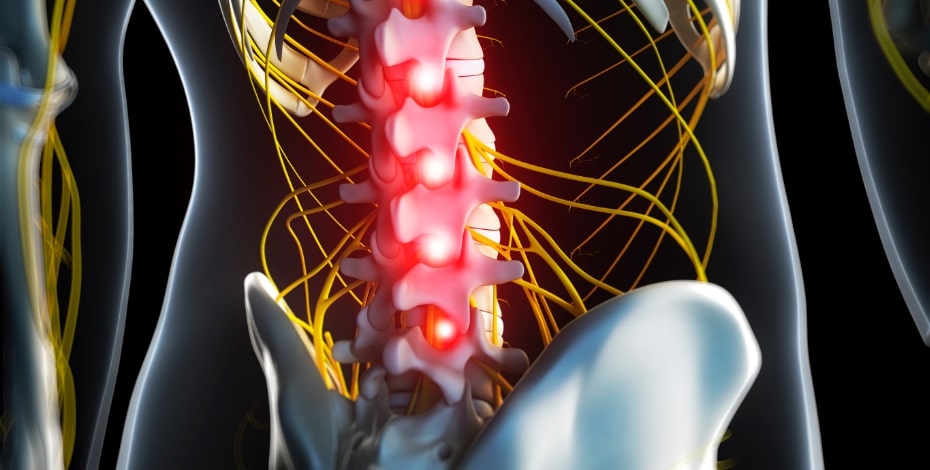
Spinal manipulation for low back pain

In this randomised trial, no clinically important differences were observed between directed manipulation and generic manipulation in people with chronic low back pain. Q&A with Leonardo Oliveira Pena Costa.
Your trial compared two different approaches to spinal manipulation for chronic low back pain. Before your trial was conducted, what did the evidence say about the effects of spinal manipulation in chronic low back pain?
Spinal manipulation is endorsed by most, if not all, clinical practice guidelines for patients with low back pain.
There is a very well conducted systematic review published in the British Medical Journal from 2019 that compared the evidence from spinal manipulation against other recommended and non-recommended interventions for back pain.
These authors found that spinal manipulation produces similar effects to recommended therapies for chronic low back pain, whereas spinal manipulation seems to be better than non-recommended interventions for improvement in function in the short term (tinyurl.com/y7gw55q5).
How did the two spinal manipulation approaches in your trial differ?
Most physiotherapists, chiropractors and osteopaths have been taught to conduct a specific clinical examination in order to identify the target level for an efficacious manipulation.
There are very specific approaches to determine not only the level of manipulation but also a likely ‘inadequate’ position of vertebral level. In theory, these approaches would determine where and how a therapist should manipulate.
In our trial we use a directed manipulation (ie, the therapist manipulated the most painful level) or a generic manipulation (ie, the therapist manipulated a segment far from the most painful level; in our case, the thoracic spine).
We identified that there was no difference whatsoever in all outcomes (in all time points) by doing one or the other.
What is the theory behind manipulation away from the most symptomatic vertebral level?
Again, we have been taught for decades that vertebras can be incorrectly aligned and this ‘bad alignment’ is associated with pain and disability. The theory behind this is that spinal manipulation is likely to realign the vertebral segments and improve symptoms.
Many mechanistic studies have been challenging this theory, but no one has conducted a clinical trial on this.
We conducted a similar trial a few years ago (tinyurl.com/ yc6cf6uf). However, in this past trial we used a single manipulation with immediate follow up.
We found that directed and generic manipulations provide the same results—we received some insightful criticism from clinicians because we tested the effectiveness on a single session. Then, we decided to conduct this trial that is now published in Journal of Physiotherapy, using a course of 10 treatments and a longer follow up.
The most accepted theory is that any manipulation can cause a cascade of neurophysiological events that reduces pain and improves function in the short term. This makes perfect sense for us after conducting these two trials.
For how long were the interventions applied in your study, and for how long after the interventions did you continue to follow up participants?
Patients were offered to receive 10 treatment sessions over a period of four weeks. We had follow ups with participants for up to six months.
How did the effects of the two spinal manipulation approaches differ?
We found no statistical nor clinical difference of import between the two interventions. For example, the mean between-group difference in our primary outcome (pain after four weeks of treatment) was zero (95 per cent –0.9 to 0.9). For the remaining outcomes the between-group differences were also very close to zero.
As the trial is of high quality and capable of detecting clinically important differences, we are very confident on our findings. There is no reason to believe that a directed approach is better than a generic approach.
What does this mean for clinical practice?
For a trial with a non-significant result, you can actually draw a lot of clinical implications.
Based upon these findings, shared decision-making in the selection of treatments should be encouraged by considering either the patient’s preferences and perspectives as well as the therapist’s skills and preferences. Based on the results of this trial, the therapist may choose their preferred therapy, directed or generic, manipulation.
In the case of patients with severe low back pain, for example, the therapist’s decision would be to manipulate a site away from the painful segment.
Also, the therapist’s ability with either technique may be considered. Therapists may choose to manipulate the patient specifically at the most affected level or not, according to the technique in which they are most skilled.
Furthermore, the length of time for evaluation in the case of choosing specific manipulation should be considered. For specific vertebral manipulation, the therapist needs to perform several palpation tests that require different patient positioning.
In non-specific manipulation, many of these procedures are unnecessary. With regards to patients, they may feel more comfortable with manipulation away from the painful region. Their preference can be respected by giving the option of manipulation either in the thoracic or in the lumbar spine.
Dr Leonardo Costa, is the head of the Masters and Doctoral Programs in Physical Therapy at Universidade Cidade de São Paulo, Brazil. His research focus is on clinical trials/ systematic reviews on non-pharmacological interventions for spinal pain; methodology and assessment of outcome measures relevant to musculoskeletal conditions.
© Copyright 2025 by Australian Physiotherapy Association. All rights reserved.





